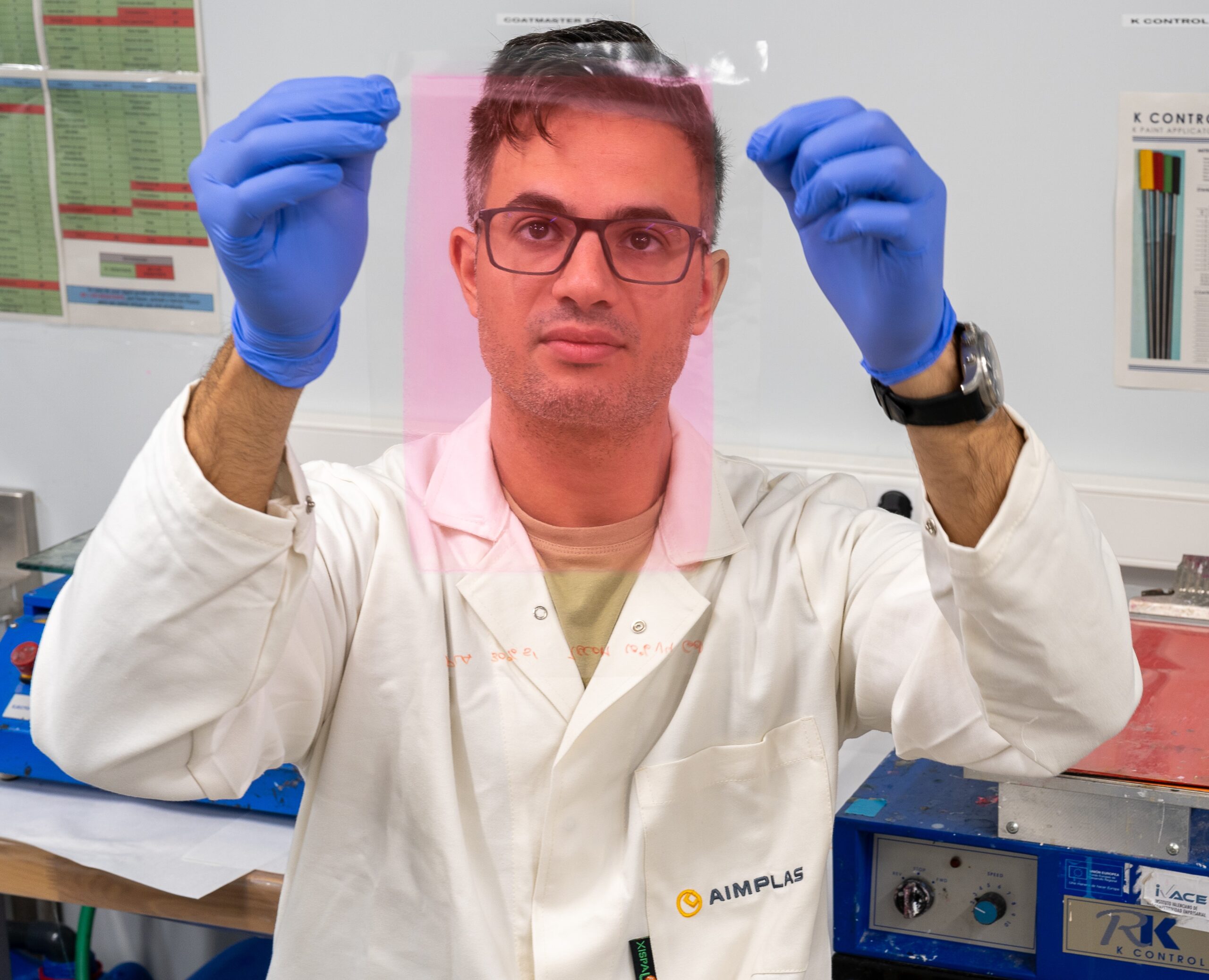Recent predictions state that fisheries global production will reach 194 million tonnes by 2026. Worldwide, almost 20 million tonnes of raw material are mainly used for the production of fishmeal and fish oil. One of the key-points that will make grow the fish industry circular economy, is the cost-effective treatment of residual bio-based fish side-streams to extract bioactive compounds for high-value applications. At this point, the EcoeFISHent project comes into play to promote a demonstrable and replicable cluster implementing systemic solutions through multilevel circular value chains for eco-efficient valorization of fishing and fish industries side-streams.
Aimplas is in charge of the development of a barrier coating for food packaging from fish gelatine and cosmetic packaging from fishing nets. In line with the European Strategy for Bioplastics in a Circular Economy, EcoeFISHent will develop, starting with gelatine extracted from Fish Processing Side-streams, a gas barrier biopolymer coating for packaging of oxidation sensitive food (e.g., meat, fish, cheese, etc.) to substitute conventionally used fossil barrier polymers, maintaining the desired functionality, sustainability, and non-harmful utility. The process will be scaled up to industrial pilot production to provide a compostable packaging for fish food.
In addition, EcoeFISHent will provide a circular feasible economic and environmentally solution for recycling fish nets coming from the fishing and aquaculture industry. The polyethylene recovered by fishing nets will be employed by Aimplas to produce cosmetic packaging by extrusion and further injection moulding and lamination processing.
As a whole, EcoeFISHent pre-processing pilot unit will enable transforming fish by-product into final high-added value products such as food supplements, cosmetics, bio-based polymers. The project has implemented six multilevel and synergic circular value chains interconnecting blue and green economies to reconcile human industrial and economic activities with marine ecosystems and marine protected areas.










